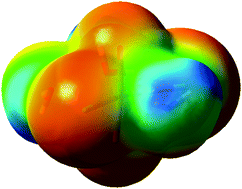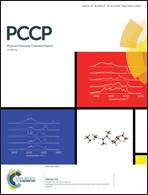Non-covalent interactions of uranyl complexes: a theoretical study†
Abstract
We report a set of theoretical calculations designed to examine the potential of model uranyl complexes to participate in hydrogen- and halogen-bonding. Potential energy scans for the interaction of [UO2Cl2(H2O)3] and [UO2(NCSe)2(H2O)3] with a single water molecule demonstrate that uranyl is a weak hydrogen bond acceptor, but that equatorially coordinated water is a strong hydrogen bond donor. These predictions are supported by a survey of contacts reported in the Cambridge Structural Database. At the minima of each scan, we show that the interaction energy is only weakly dependent on the choice of the theoretical method, with standard density functional theory methods comparing well with coupled-cluster, MP2 and double-hybrid DFT predictions. Geometry optimisation of a 1 : 1 uranyl : water complex results in a cyclic structure, in which vibrational frequencies, atoms-in-molecules and natural bond orbital analysis support the weakness of U–Oyl as an acceptor. The origin of this behaviour is traced to the electronic structure of uranyl, and in particular covalency in the U–Oyl bonds resulting from donation into formally empty 5f and 6d orbitals on U.



 Please wait while we load your content...
Please wait while we load your content...